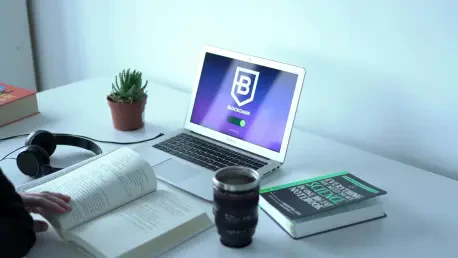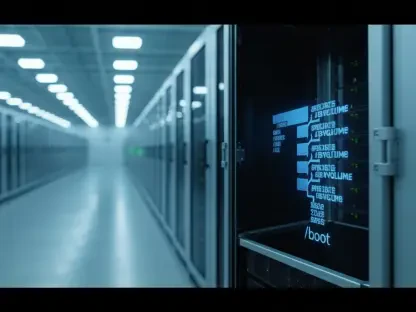In recent years, blockchain technology has captured the imagination and attention of industries and individuals alike, hailed as a groundbreaking solution for enhancing security and trust in digital transactions. At the heart of its appeal is blockchain’s ability to offer a transparent, tamper-proof ledger that revolutionizes the way data is handled and verified. However, the transparency afforded by blockchain is fundamentally interwoven with another modern technological principle: open source software. Open source has long represented a commitment to public collaboration and accessibility. Advocates assert that open source creates pathways for improved transparency, security, and reliability within blockchain systems. Without it, blockchain technology risks descending into opaque systems lacking the clarity and verifiability essential for widespread trust and adoption.
The Role of Open Source in Blockchain Transparency
The relationship between open source and blockchain transparency is essential yet often underappreciated. Open source refers to software with source code that anyone can inspect, modify, or enhance. This accessibility plays a crucial role in ensuring blockchain systems remain transparent and trustworthy. Through open source, developers and users wield the power to audit and understand blockchain protocols, thus avoiding the pitfalls of “black box” systems where internal workings are hidden from view. Transparency, a defining attribute of blockchain, is not limited to its public ledger but extends to its foundational code, which must be clear and accessible for scrutiny.
Transparent public ledgers ensure transactions are traceable and auditable without reliance on trusted intermediaries. However, if the code governing these transactions and protocols remains closed off, true transparency is compromised. The open source model mitigates this by democratizing access to the code, allowing diverse global communities to verify, test, improve, and secure blockchain systems. This process not only fortifies security by identifying vulnerabilities but also fuels continuous innovation through collaboration. As a result, open source aligns powerfully with blockchain’s ethos of decentralization and trust.
Case Studies: Open Source in Action
Real-world examples illuminate how open source drives blockchain’s success. Bitcoin serves as the most prominent case, operating entirely on open source principles. When Satoshi Nakamoto released Bitcoin’s code publicly, it catalyzed a decentralized network of contributors able to propose improvements, leading to advancements in security and efficiency. This open approach has ensured its resilience against threats and adaptability to users’ evolving needs. The decentralized nature of development attracts a diverse pool of talent, encouraging transparency and constant vigilance against potential threats.
Ethereum offers another exemplar of open source’s contribution to blockchain evolution. As an open-source project, Ethereum thrives on community involvement for development and auditing. This participation has been instrumental in facilitating the creation and implementation of smart contracts, automated digital contracts executed on blockchain. The robust support system nurtured by the Ethereum community embodies the open source spirit, accelerating platform upgrades. Open access to code thus plays a crucial role in spurring innovation, which in turn, breeds trust and reliability.
Challenges and Risks of Open Source
While open source is pivotal for blockchain transparency, it is not without challenges. Transparency brings risks, as publicly available code can become a target for malicious actors aiming to exploit vulnerabilities. Open projects must continuously engage in vigilant oversight to ensure security and integrity. The frequency of updates, reviews, and bug fixes is crucial in staying one step ahead of potential threats. Open communities must foster a culture of vigilance and rapid response.
Additionally, the balance between open source’s public nature and intellectual property rights poses challenges. Companies pursuing proprietary interests may hesitate to fully adopt the open source model due to concerns about losing competitive advantages or infringements. This tension can slow adoption rates and hinder full-scale cooperation. Strategies that address both innovation and the commercialization of blockchain are essential to harmonize open source values with commercial incentives. Despite these hurdles, the broad benefits of open source in enhancing blockchain’s transparency and credibility significantly outweigh its challenges.
The Future of Open Source in Blockchain
The proliferation of blockchain technology hinges on its successful integration of open source principles into its fabric. Moving forward, strategies focused on strengthening transparency through open source adoption will likely define the industry’s trajectory. Initiatives advocating for standard open source practices in blockchain development can enhance user trust and encourage regulatory alignment within a globally digital economy.
By encouraging collaboration among varied stakeholders, developers, researchers, and regulatory entities can construct open frameworks that guarantee blockchain’s accountability and security. Policymaking should also align with open source values, establishing conducive environments for open participation and innovation without unnecessary barriers. The creation of incentives for projects to adopt an open-source approach will not only promote richer ecosystems but also bolster blockchain’s transformative promise.
In conclusion, the synergy between open source and blockchain transparency underscores a fundamental truth: open source is indispensable to realizing blockchain’s foundational promise of a decentralized, secure, and transparent future. As blockchain continues to develop and integrate into different aspects of society, open source remains an essential tool, enabling blockchain systems to thrive in openness, trust, and communal development.









